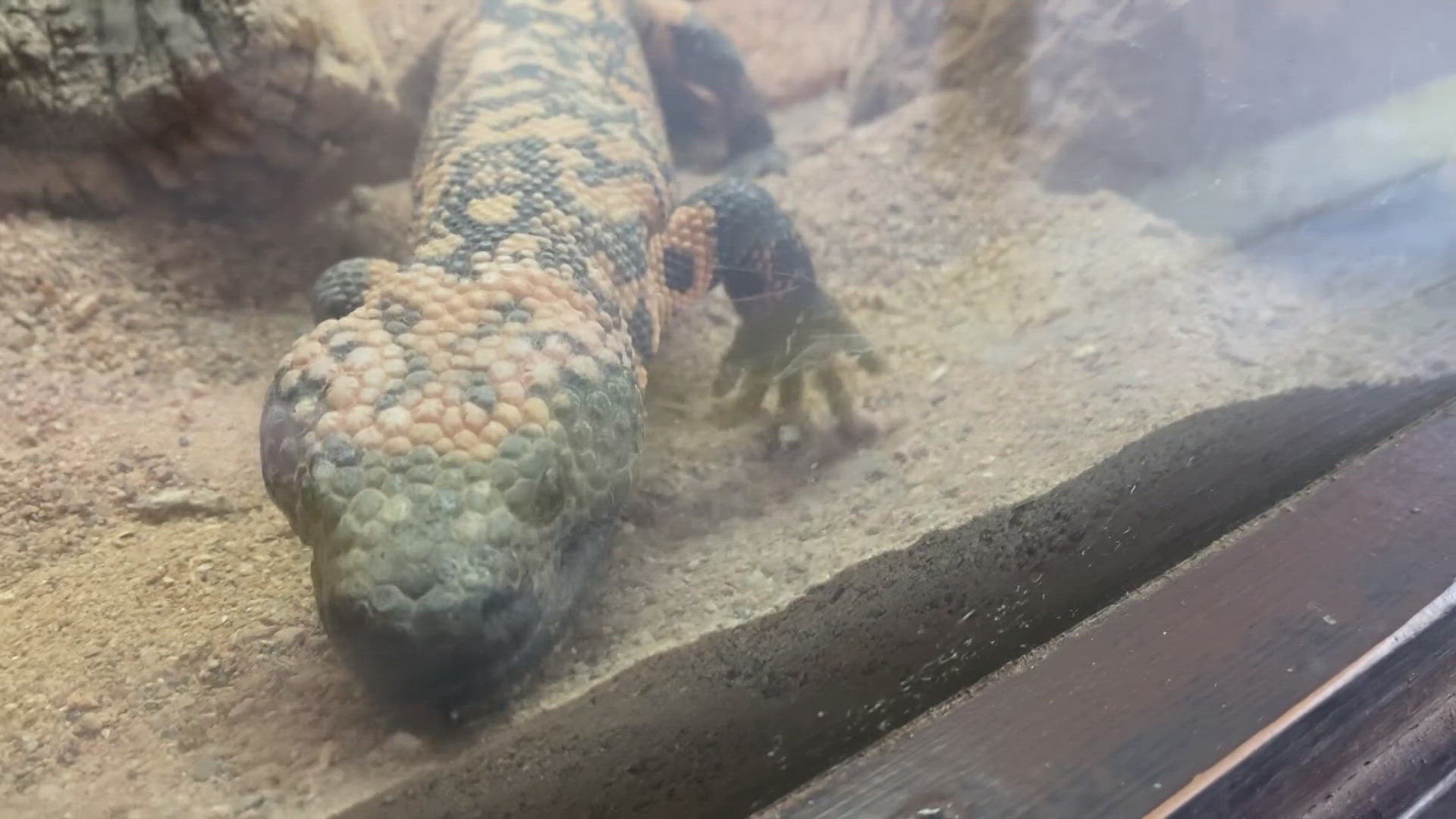PHOENIX — From snakes to coyotes, there's plenty of wildlife in Arizona. However, there's one in particular that plays a huge part in modern medicine.
"I think it's the iconic Southwest desert animal," Phoenix Zoo Curator, Bradley Lawrence said.
You've probably heard about the Gila monster, but few people see it. That's because this reptile spends about 90% of its life underground.
"They can get to be 20 inches or so, it's a large lizard," Lawrence said. "It's the largest lizard in North America."
It's also venomous and is one animal you don't want to mess with.
"Gila monsters have glands in the lower jaw, so when they bite they hang on. The longer they hang on, the longer that venom flows up through their teeth. Gila monsters use it as a defense and it causes immediate, excruciating pain that lasts a long time."
A bite from one of these reptiles may hurt like you wouldn't believe. However, that venom is also highly beneficial for those with type-2 diabetes.
"It lowers blood sugar, it acts like insulin," Lawrence said.
The use of venom from animals is not entirely uncommon. Snakes, leeches, spiders, and even Komodo Dragons have helped with certain treatments. Komodo dragon venom is being studied as a possible treatment for blood clots since it acts as a blood thinner.
"Scorpion venom has been actively researched, a lot of different snake venom has been used," Dr. Dan Quan said.
Dr. Quan is an Emergency Physician and Medical Toxicologist at Valleywise. He said research regarding Gila monster venom done many years ago revealed a protein in the lizard's venom was similar to one in humans that increases insulin production.
"So it's a Glucagon-like protein, or Glucagon-like peptide and that targets certain cells in the body pancreas that says 'I'm full', it slows the gut down, it regulates blood sugar, it does all these things that we've discovered throughout time," Dr. Quan said.
As a result, the venom has helped create different type-2 diabetes drugs for more than a decade. It's also evolved into other treatments, like Ozempic, which is derived from Gila monster venom.
"Once you have the recipe down you don't need the original," Dr. Quan said. "You can isolate different components. So a lot of times they'll extract the venom and do testing and they have techniques now where they make the medications without using the venom."
So the next time you're lucky enough to see a Gila monster, know while they can be deadly, these reptiles have also helped save lives, one bit of venom at a time.
"All animals out there can contribute all kinds of things in our life," Dr. Quan said. "If we can find something that will help us all, why not? I think it's amazing, especially now with all the instrumentation we have, the techniques we have. We'll certainly find more in the future."
"A lot of venomous animals are persecuted heavily so it's nice to let people know we need these animals," Lawrence said. "The environment needs them, we need them as well."
Experts say to never pick up or touch a Gila monster (it's also illegal to do so).
WE ❤ ARIZONA
Explore amAZing people, places and things across our state on our 12News YouTube playlist here.

